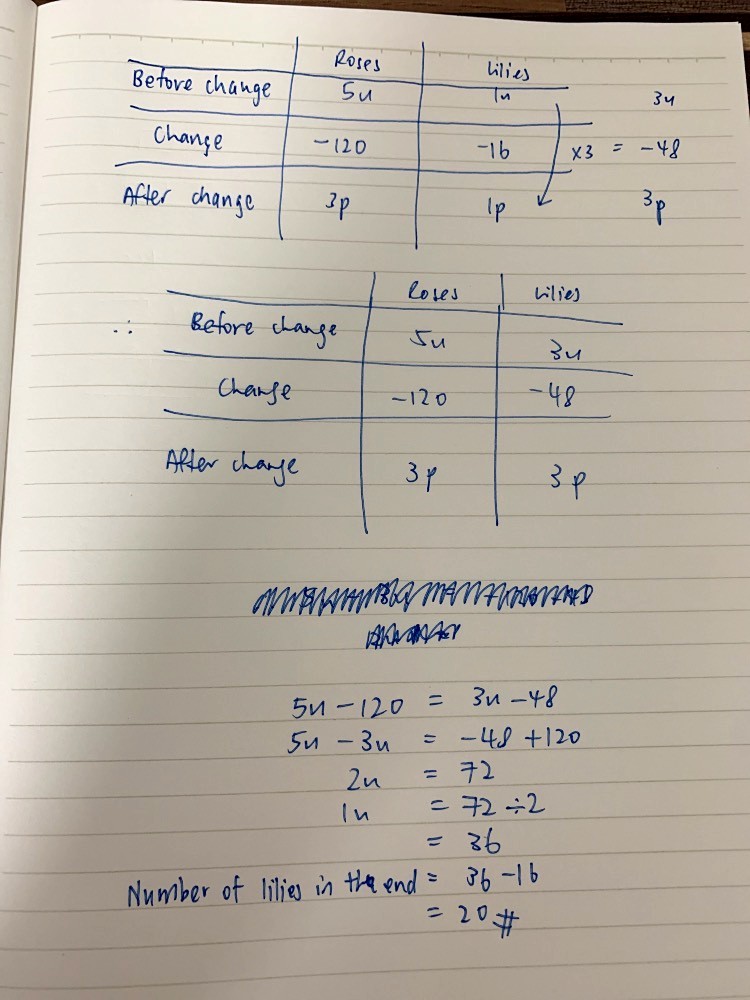Beverly's answer to Ashley's Primary 6 Maths Ratio Singapore question.
I dont get the part where you convert 1u to 3u and multiplying -16 by 3 . Care to enlighten me ?
I dont get the part where you convert 1u to 3u and multiplying -16 by 3 . Care to enlighten me ?
this is a ratio question that involves change in 2 variables - roses and lilies. both roses and lilies were sold (decrease) in this scenario, unlike other ratio questions for example: only one variable is changed (roses were sold (decrease) but lilies were UNCHANGED).
for this kind of question, 3 pieces of information will be given to you:
1. the original ratio (5 : 1) of the question is provided to you before the change in quantities
2. the change in quantities: 120 roses and 16 lilies sold
3. the final ratio (3 : 1) after the change in quantities
if we use the model method, the drawing of the model will not be accurate as we do not know the number of roses/lilies represented by each unit. (you can try to draw the model to know what i mean)
therefore, the ratio method will be more ideal. the only requirement we need is that the parts (represented in "p") have to be equal. since the parts are in the ratio 3p : 1p, we only need to multiply the whole column of lilies by 3. thus, multiplying -16 by 3 and also multiplying the parts (1p x 3) to be 3p. this, in turn, creates the equation as seen in the second table i have drawn: 5u - 120 = 3u - 48 (since the parts are already 3p : 3p) - this means:
5u - 120 = 3p
and
3u -48 = 3p
therefore,
5u - 120 = 3u - 48
from there, we solve for 1u and finally calculate the number of lilies the florist had in the end.
hope this helps
for this kind of question, 3 pieces of information will be given to you:
1. the original ratio (5 : 1) of the question is provided to you before the change in quantities
2. the change in quantities: 120 roses and 16 lilies sold
3. the final ratio (3 : 1) after the change in quantities
if we use the model method, the drawing of the model will not be accurate as we do not know the number of roses/lilies represented by each unit. (you can try to draw the model to know what i mean)
therefore, the ratio method will be more ideal. the only requirement we need is that the parts (represented in "p") have to be equal. since the parts are in the ratio 3p : 1p, we only need to multiply the whole column of lilies by 3. thus, multiplying -16 by 3 and also multiplying the parts (1p x 3) to be 3p. this, in turn, creates the equation as seen in the second table i have drawn: 5u - 120 = 3u - 48 (since the parts are already 3p : 3p) - this means:
5u - 120 = 3p
and
3u -48 = 3p
therefore,
5u - 120 = 3u - 48
from there, we solve for 1u and finally calculate the number of lilies the florist had in the end.
hope this helps


